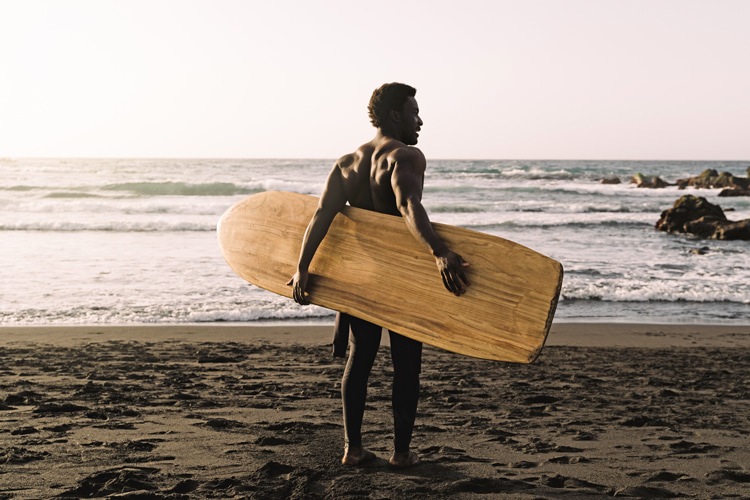Surrounded by the Atlantic and Indian oceans, Africa has been a continent with a strong social, economic, and cultural connection to the water for thousands of years.
The history of surfing has crystallized the conception that the sport of surfing - or the act of riding a wave - was developed by Polynesians.
Also, historians have considered that the first account of surfing was written in 1778 when Captain James Cook and his crew arrived at the Hawaiian Islands.
History, however, is in constant mutation and subject to several updates.
And so, according to Kevin Dawson, author of the book "Afrosurf," it's time to review and rewrite a few pre-established facts.
"The Endless Summer" Myth
One myth that needs to be addressed and debunked is that Bruce Brown's iconic "The Endless Summer" introduced surfing to African communities.
People all along the coast, from Senegal to Angola, started surfing on their own for probably a thousand years.
With many miles of warm water and good waves, the Mother Continent nurtured strong swimmers that used to surf on canoes and could even catch and ride 10-foot-plus waves.
Locals used to surf on short wooden boards or small one-person canoes.
They would either lay, sit, kneel, or stand on three-to-five-foot boards and enjoy the ride.
So when Californian surfers Robert August and Mike Hynson arrived in Ghana's Labadi village, local youth could quickly adapt to the Americans' boards.
Believe it or not, Africans also used 12-foot-long boards to paddle for miles.
An English scientist named Robert Rattray took pictures and wrote about the people who used these longboards on Lake Bosumtwi, near Cape Coast, in Ghana.
The local people - called the Asante - believed that a lake god named Twi did not allow canoes on the lake.
So, instead of canoes, they used paddleboards called "padua" to fish and travel across the five-mile-wide lake.
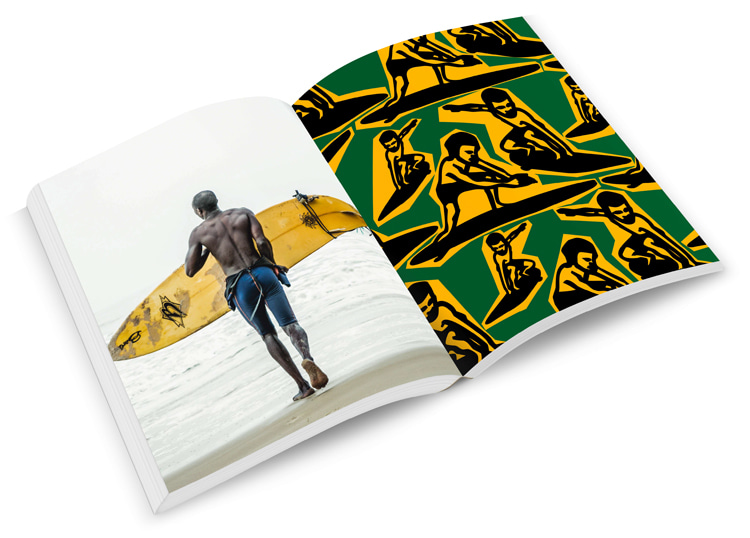
Surfing's First Written Account
Throughout his research career, Kevin Dawson, a surfer and associate professor at the University of California, Merced, realized that surfing's first known account was documented in the 1640s in what is now Ghana.
But how was it possible?
German goldsmith-merchant-adventurer Michael Hemmersam was working for the Dutch West India Company.
Believing he was watching West Africa's Gold Coast children - probably Fante in the Cape Coast, Ghana area - learn to swim, he wrote these historic words:
"[Parents] tie their children to boards and throw them into the water."
Inadvertently, Hemmersam was creating the first written account of African surfing.
The truth is that most Africans learned to swim when they were less than two years old, even though some would drown.
There was already a strong ocean culture, at least on Africa's west coast.
Other Europeans provided similar descriptions. Two hundred years later, James Alexander wrote the following while in Accra, Ghana:
"From the beach, meanwhile, might be seen boys swimming into the sea, with light boards under their stomachs. They waited for a surf and came rolling like a cloud on top of it."
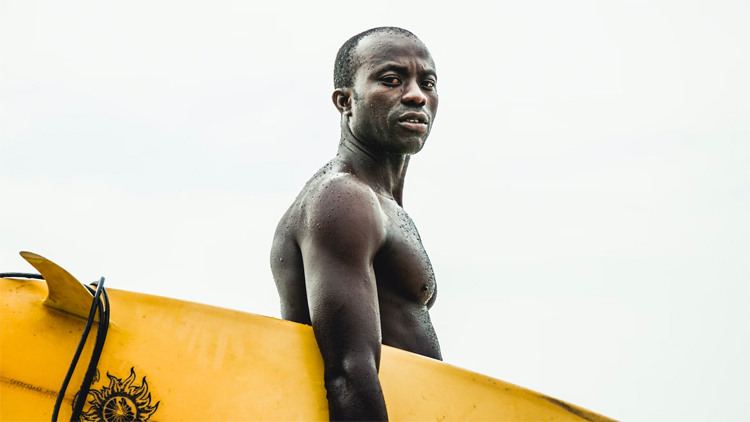
Surfboard As An Economic Vehicle
While it seems evident that Africans have been riding waves for centuries, with and without wooden boards, financial reasons drove them to do it.
Surfing was a way for people to make money.
It let Africans figure out areas where the waves were especially strong so they could use surf canoes to get around.
These surf canoes were strong enough to go from one beach to another, connecting coastal cities to the ocean where they could find food or ships.
The African coast doesn't have many natural ports, and the waves are strong along much of it.
So, the only way many people could access what was in the ocean was by building special surf canoes that could go through the waves and land on the beach.
They were quick, agile, and could be easily steered so that they could get to the shore safely.
Surfing is a way of passing down wisdom from generation to generation, turning surf spots into social and cultural hubs.
By submerging themselves in the water and riding the wave, young people learn about the ocean.
They learn the distance between waves, the physics of breaking waves, and how to tell when a set of waves is coming.
A key part of surfing is understanding that you must move at the same speed as the wave if you want to catch it.
This is something that Westerners only figured out in the late 1800s.
In times past, when there were few sources of energy, Africans living near the Atlantic Ocean found a way to use the waves.
They put fish or heavy cargo onto surf canoes, which they used to get onshore. They were the only people to use the energy of the waves like this.
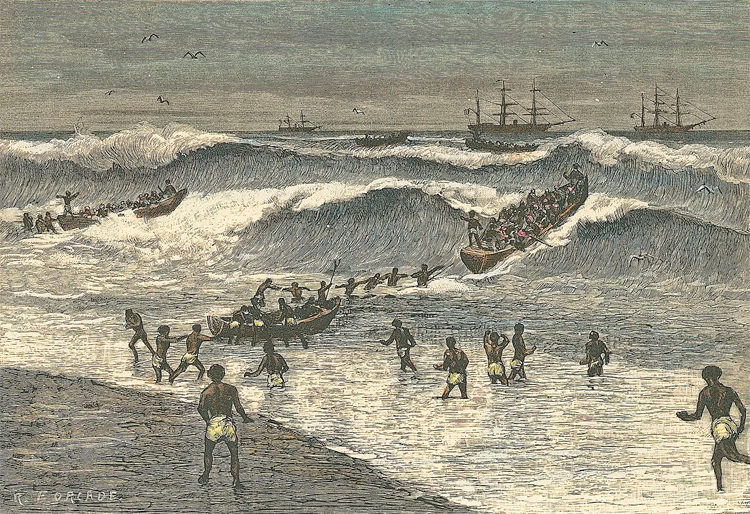
Tricking Europeans
Surf-canoemen were an important part of the colonial economy.
They brought goods into and out of Africa from the 1400s to the 1950s, when modern ports were built.
In the 1400s, surf-canoemen showed Europeans how to enjoy surfing, even though only a few were good swimmers.
In 1853, Horatio Bridge provided an exaggerated account of surf-canoeing at Cape Coast. He wrote:
"The landing is effected in large canoes, which convey passengers close to the rocks, safely and without being drenched, although the surf dashes fifty feet in height."
"There is a peculiar enjoyment in being raised, by an irresistible power beneath you, upon the of high rollers, and then dropped into the hollow of the waves, as if to visit the bottom of the ocean."
Surf-canoemen attached a chair to the front of their canoes. This was for the brave European passengers who wanted to take a ride.
They knew that Europeans were scared of drowning and being eaten by sharks if they fell into the African water.
So, the surf-canoemen created a kind of game to scare the passengers and make more money.
The Ga surf-canoemen would make Europeans stay in the surf zones longer by appearing to have messed up the timing.
In this situation, it was usual for each person on the boat to give the surf-canoemen a nice gift.
Shaping the Craft
Surf canoes were special objects made using iron tools out of trees called silk cottonwood.
These tall trees were seen as a way to connect the sky and the earth, and some people thought the souls of babies yet to be born were in them.
Surf canoes had a gender that determined how they moved in the waves, and it was believed that the tree's spirit stayed in the canoe and talked to water spirits.
People thought the ancestors lived at the bottom of the ocean with various gods and spirits.
Fishermen and traders would give offerings to the surf canoes and the water gods, hoping for a safe journey and successful trips.
People from Senegal to South Africa and beyond in Africa believed in deities that looked like mermaids.
The most popular one was called Mami Wata, which means "Mother Water." She had special powers like the ability to travel between the present and the future.
Mami Wata would protect people from drowning and take people who were swimming, canoeing, or surfing down into the spirit realm.
She would show them its mysteries and then return them to the surface with increased wisdom, good health, and luck.
She liked to live in waters with special features, like surf zones, whirlpools, and waterfalls. It was said you could hear her voice in the sound of moving water.
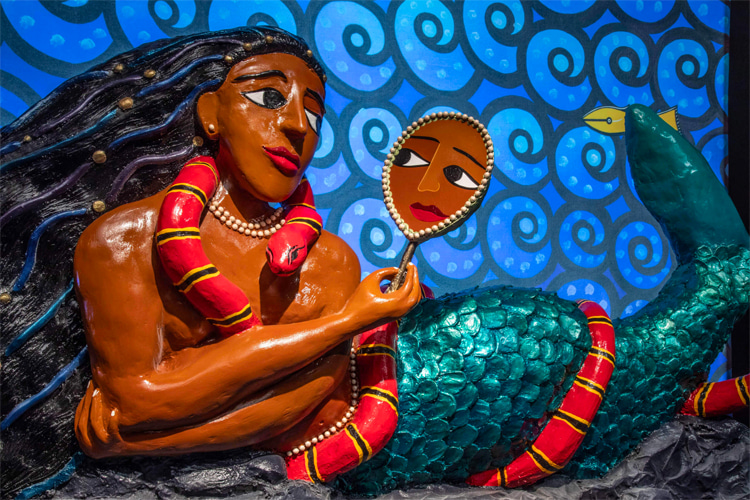
Paddles Like Sporks
Like surfboard shapers, canoe-makers created different types of surf canoes to be better suited for particular types of waves.
Hundreds of variations existed, each distinct enough to have its own name.
How these surf canoes were designed was based on the local conditions, such as the steepness of the beach and the size, shape, and strength of the waves.
For example, fishermen from the Labadi area of Ga used three types of surf canoes along two miles of beachfront: the Ali lele, the Fa lele, and the Tfani lele.
The Fante people invented a three-pronged paddle that looks like a spork.
When paddled quickly, it gives more power as the three fingers spread out. This also helps if it hits a wave as you paddle forward.
The Fante traveled all over the region, from Liberia in the north to Angola in the south, and spread their knowledge of surfing and their paddle design.
The Ga people adopted the paddle in the 1700s.
In the movie "The Endless Summer," Bruce Brown joked that when you see the Fante people paddling towards you, it looks like they are coming to have you for dinner.
To the north of the Gambia River were Senegambian pirogues.
They stuck out at the front and back and were made by the Niuminka or Niumi people from the Djomboss Islands.
The Lebu people from the Cape Verde Peninsula and others also helped make these canoes. They were able to ride really big and steep waves.
In the 1700s, enslaved Africans took their culture to the Americas. This included Mami Wata, a deity, and other aquatic traditions.
They started surfing and using surf canoes from South Carolina to Brazil.
The history of surfing is a work in progress.
And while gathering the pieces of the puzzle, it's critical to acknowledge that the so-called Western civilization has little or even nothing to do with the birth of the sport and outdoor activity.
What was the fundamental role of the caballitos de totora in the development of the wave riding technique?
Could China's surfing buddhas have led the way from East Asia? The early pages of surfing history might still be uncharted waters.
For more about the influence of Africa in the development of surf culture, watch the documentary "Wade in the Water: A Journey into Black Surfing and Aquatic Culture," directed by David Mesfin.
